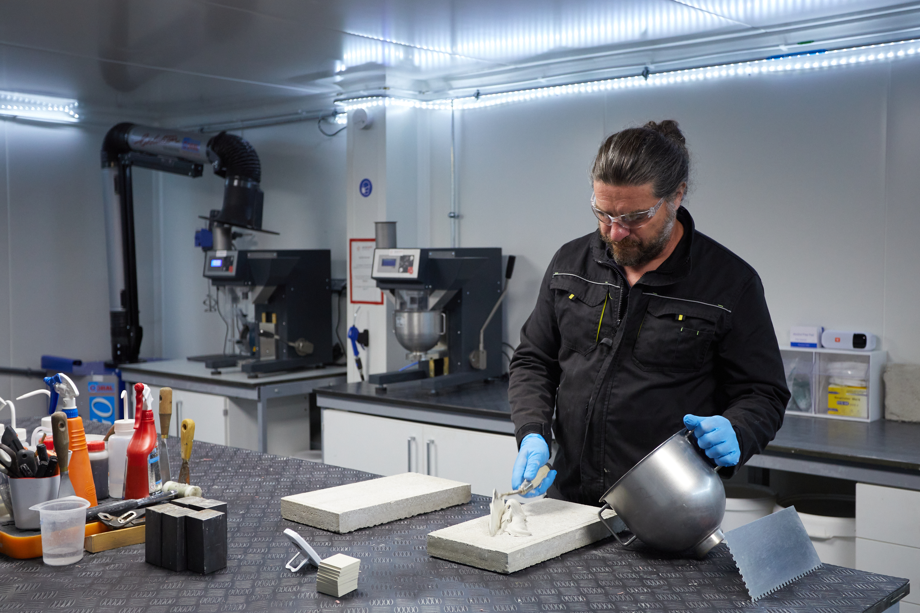22 August 2024 – Last week I attended an outstanding three-day virtual Sustainability Summit hosted by the Portland Cement Association. There were several excellent presentations covering the industry’s three key levers toward achieving net zero: Alternative Fuels, Carbon Capture Utilisation and Storage (CCUS), and Blended Cements, as well as insight from leading contractors and researchers working to quantify and validate claims of carbon contents in concrete.
Historically the cement industry was a quiet, mundane industry. So ubiquitous for over a thousand years that no one seemed to take any notice of it. Most people know nothing about the industry, not even the difference between cement and concrete.
However, in recent years the cement industry has received a great deal of attention due to concerns about climate change, and the industry’s circa 8% contribution to global CO2 emissions. Now, along with other so called “hard to abate” industries such as steel, the industry finds itself center stage and governments around the world are devoting unprecedented sums of money to support decarbonisation of the cement and concrete industrial subsector. Global investment in all climate-related projects averaged $1.3 trillion a year in 2021 and 2022 according to the Climate Policy Initiative (CPI), and the CPI suggested these expenditures need to increase by at least five-fold annually to meet 1.5 C° targets. These are staggering sums of money, with tens of billions devoted to just the cement and concrete industrial sector.
As people familiar with the industry know, the production of “clinker,” the reactive intermediate product used to produce Portland cement, is the source of 90% of cement’s CO2 emissions. Clinker is made when limestone and clays are heated together in a kiln at 1,450 °C. Only one-third of the CO2 emitted from this manufacturing process comes from the energy used to heat the kiln and other energy-intensive processes. The remaining two-thirds come from the chemical reaction which occurs when the limestone breaks down inside the kiln from CaCO3 to CaO (quicklime) and CO2. These are known as process emissions. In other words, even if clinker was produced using entirely green energy, the carbon footprint of clinker would only reduce by one-third.
The industry has made huge strides in improving its energy efficiency, including shifting away from fossil fuels (primarily coal, but also fuel oil or natural gas) and adapting to use a range of more environmentally conscious fuels, including liquid waste fuels, automobile fluff, tire-derived fuels, liquid and solid hazardous wastes, wood chips and other organic wastes.
If we look at the remaining two-thirds of process emissions, industry attention is focused on either capturing these emissions, or avoiding producing these emissions altogether through clinker substitution and clinker efficiency.
Clinker alternatives, or supplemental cementitious materials (SCMs), are already in use in the United States at levels among the best in the world. However, unlike in Europe, China and India, where blended cements are much more the norm, in the U.S., the vast majority of SCMs are directly distributed and proportioned by concrete producers. Nationwide about 15% of the cementitious content in concrete is direct distributed SCMs, and in some regions it is closer to 20%. Furthermore, delivering SCMs by direct distribution to concrete producers often improves logistics costs and allows concrete producers, in the majority of cases, to optimise the concrete mix design for each application.
The U.S. cement industry as a whole is performing with the best of them. It is nearing full implementation of known decarbonisation technologies, and, having adopted all widely accepted carbon avoidance options, turned to CCUS to cover the remaining 40-60% of the industry’s net-zero decarbonisation requirements.

Laboratory work at Ecocem’s Centre of Excellence in Champlan, France.
Recently the industry has seen an acceleration in the development of a range of low-carbon solutions, so kudos then to the PCA for showcasing an example of the next generation of decarbonisation technology.
Conventional assumptions on cement decarbonisation are now no longer aligned with what is technically possible. Recent advances in materials science and engineering are now enabling the design and production of highly efficient cements that use substantially less clinker, water and energy. Technologies such as Ecocem’s ACT which can eradicate the majority of CO2 from the production cycle, faster than previously thought, can now be produced cost-effectively and at scale. Ecocem has produced commercial ready-mixed concrete with 70% clinker substitution in France, while also using less GGBFS (ground granulated blast-furnace slag) than in typical concrete mix designs. We are working toward producing Ecocem ACT for commercial demonstration projects in 2025, to be followed by industrial scale production in the U.S. by 2027 in select markets.
At the PCA event, German software company alcemy made a presentation featuring their software which facilitates the production of low-carbon concrete, working with a vertically integrated cement/concrete company and supported by initial research from the economic, technical and scientific association for the German cement industry, Verein Deutscher Zementwerke (VDZ). The cement is made using clinker and high-performance SCMs to their highest efficiency. Less clinker means fewer carbon emissions. The team has demonstrated the ability to reduce the embodied carbon in concrete by 50-70% for all concrete (including steel reinforced structural concrete) using existing cement and concrete plant technologies and infrastructure.
Our industry needs these next-generation low-carbon cement technologies like those of alcemy and Ecocem to decarbonise the cement and concrete industrial subsector further, faster and for less. We all need to support widespread adoption of performance standards for concrete and government policies to incentivise low-carbon concrete production to shift our industry from being seen as hard to abate to being an industrial leader, capable of delivering Net Zero industry emissions by 2050.
The successful delivery of the Wembley Park demonstrator is not only a landmark moment for our ACT technology, it also marks the start of the next phase…
Donal O’Riain, founder and Group Managing Director of Ecocem, shares his thoughts on the EU Competitive Compass in his latest blog.